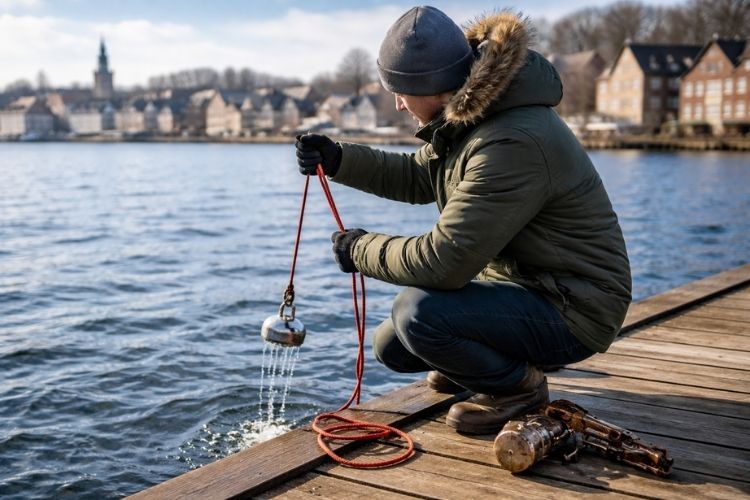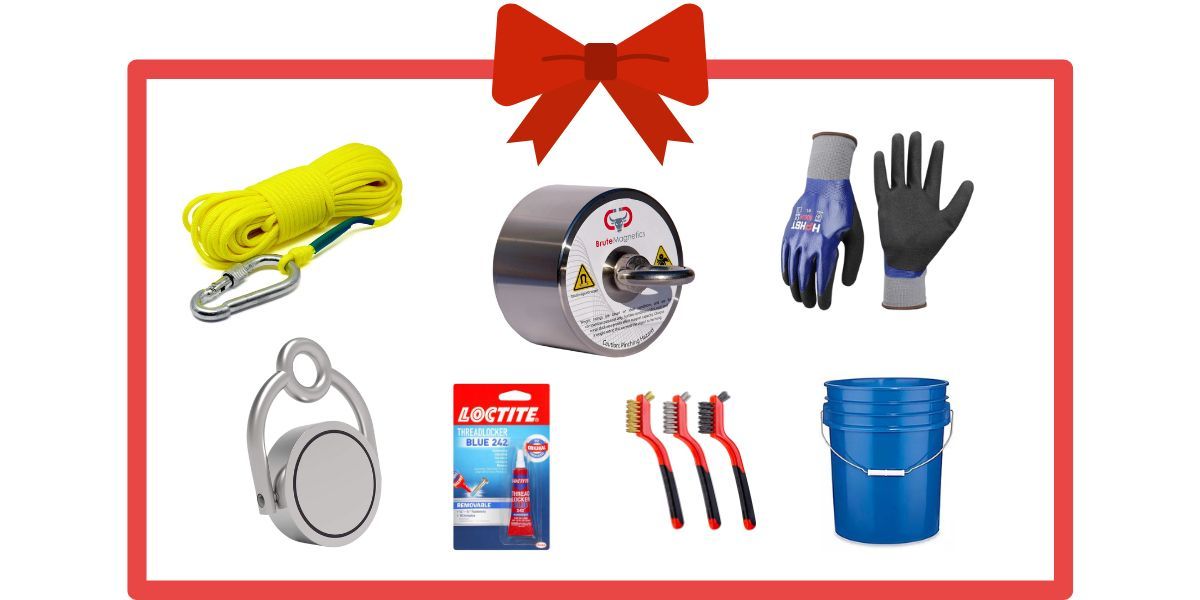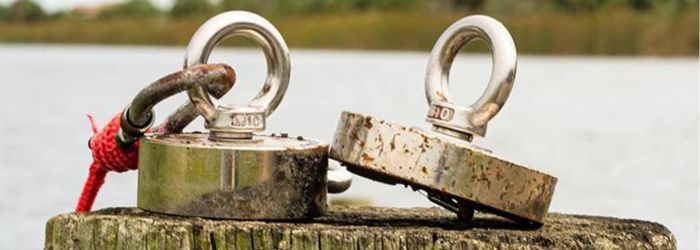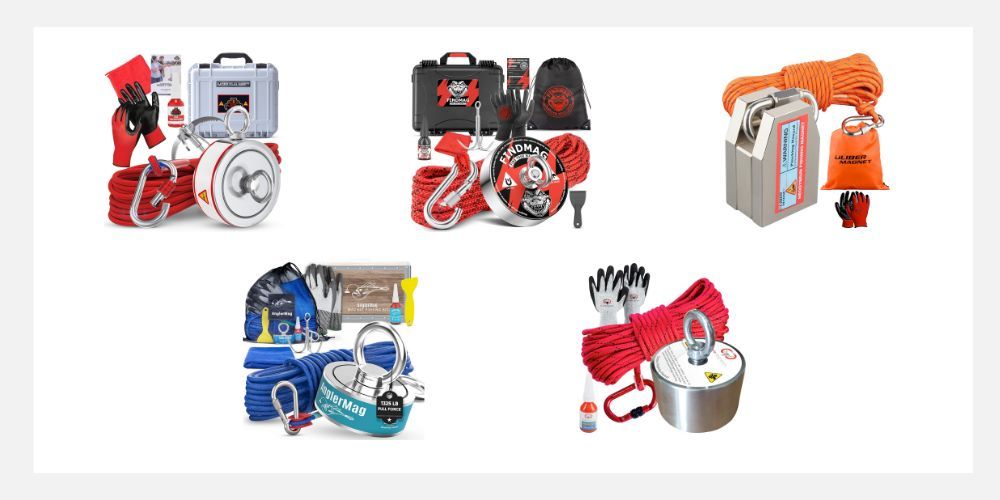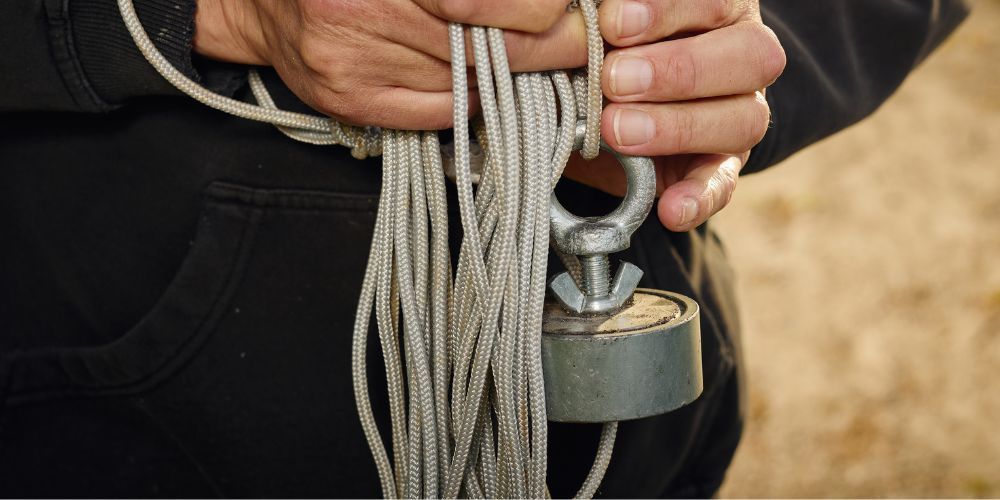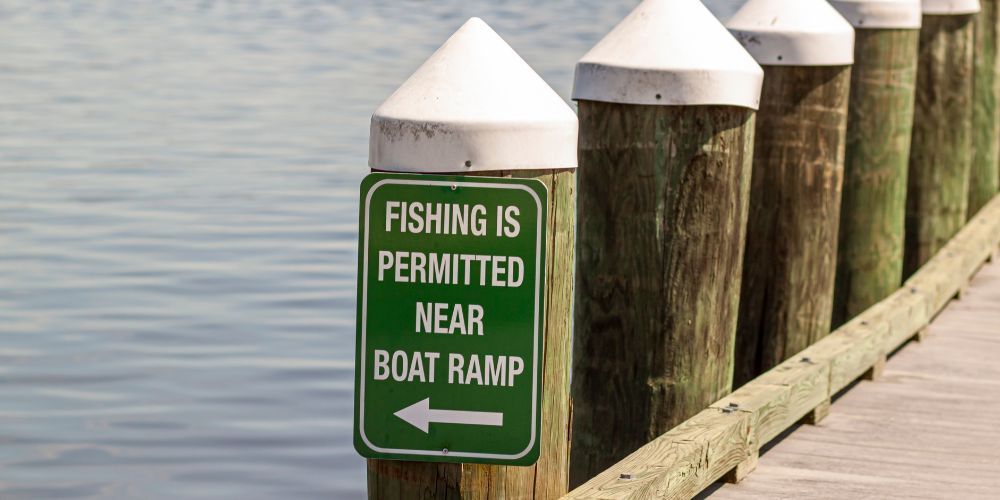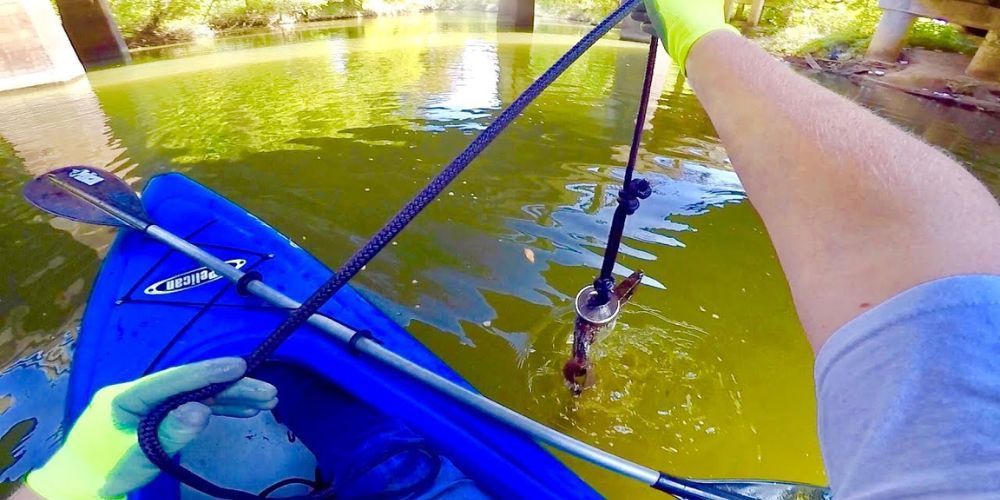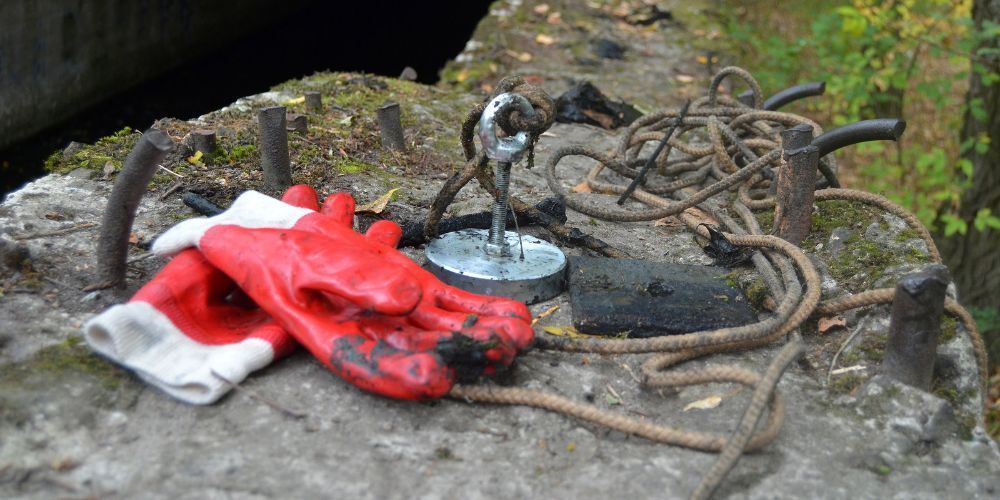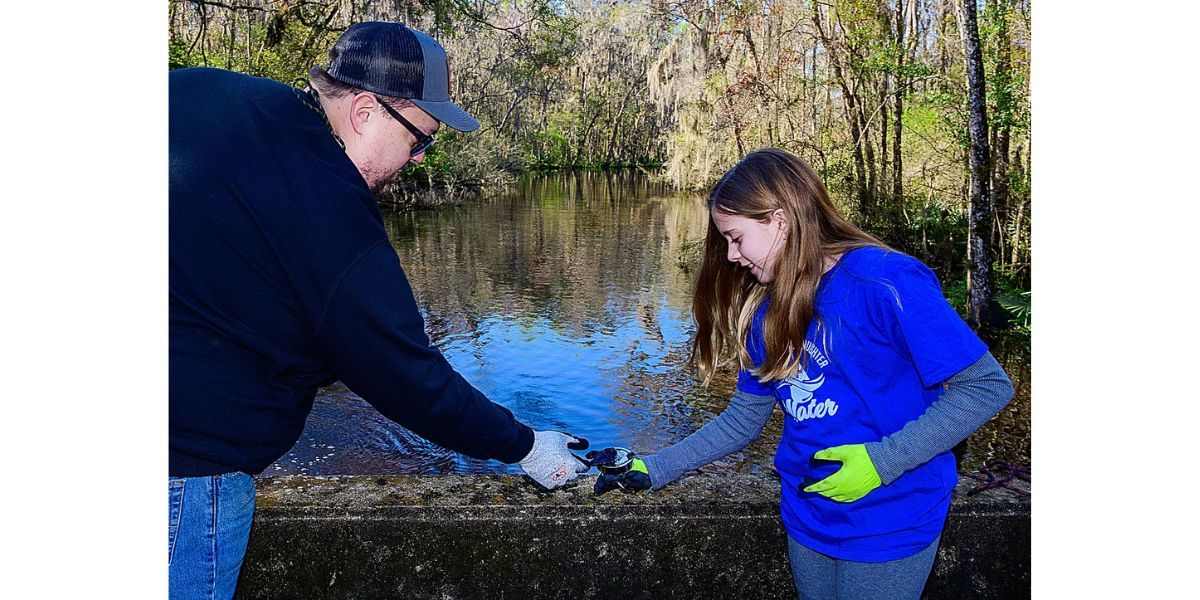Magnet Fishing in the Ocean: Tips and Gear for Beginners
Magnet fishing in the ocean offers an unparalleled combination of adventure and environmental service. The vastness of the sea hides untold secrets, waiting for someone with curiosity and persistence to uncover them. Imagine standing on a rocky shore, your eyes fixed on the horizon, feeling the weight of possibility at your feet as you pull up a barnacle-covered relic from depths unknown.
Statistically speaking, nearly 10% of treasure hunters report finding historically significant items—an old sword here, maybe an anchor there—each piece telling its own story. These findings not only satisfy one's quest for discovery but also contribute to preserving history. With each swing of your magnet, you're diving deeper into both treasure hunting lore and environmental conservation efforts.
The best part? Starting out is simpler than it seems. Equipped with a few essentials like a sturdy nylon rope and waterproof gear ensures that your first steps are steady ones. Whether it's the tactile experience of handling rugged marine finds or the emotional reward of contributing to cleaner oceans, every moment spent magnet fishing will be well worth it.
Magnet fishing in the ocean offers unique opportunities to discover a variety of metal items while contributing to environmental cleanup; however, it requires proper preparation, including strong neodymium magnets and durable rope. Additionally, safety precautions should be followed, such as obtaining necessary permits and being aware of marine life in the area.

Exciting Magnet Fishing in the Ocean
Engaging in the ocean for metal treasures is an exhilarating experience that combines adventure, curiosity, and a touch of mystery. Each time you cast your line, there's no telling what history might come to the surface. The vast expanse of water not only offers remarkable finds but also ensures that every outing is unique. Imagine pulling up an old fishing lure one moment and uncovering something significant, like a military insignia or ancient artifact, in the next. The unpredictability is part of the thrill.
It’s important to note that many magnet fishers, like John Morris, have shared stories of unexpected discoveries, illustrating just how rich our ocean floors really are. Besides anchors and historical relics, some have unearthed modern items such as bicycles and fishing gear. This variety means there’s always something new on each expedition—every visit to the ocean can feel like a treasure hunt where you never know exactly what might lie beneath the waves.
Another aspect worth mentioning is the ecological benefit inherent in magnet fishing. As you rinse away seaweed or barnacles from your finds, you're simultaneously removing debris from the sea, making it safer for marine life and improving water quality. This hobby transforms into an act of environmental stewardship that amplifies the excitement.
Engaging in ocean magnet fishing also creates an opportunity for camaraderie among fellow enthusiasts. Sharing experiences at beach clean-ups or local meet-ups fosters a sense of community while learning from seasoned veterans can enhance novice skills dramatically. Techniques like knowing which currents might carry treasures or identifying prime spots to drop your magnet are invaluable tips that can enrich your adventures.
Statistics indicate that nearly 10% of magnet fishers report recovering historically significant items, validating the belief that treasure hunting in these extensive waters often yields surprising results. From personal anecdotes to community stories, these narratives enrich the allure surrounding ocean magnet fishing, reinforcing its role as both a hobby and an avenue for discovery.
This captivating journey not only invites excitement but also encourages building connections with nature and other enthusiasts alike. Now let's explore what gear can elevate this engaging experience even further.
Essential Equipment for Beginners
When you embark on your magnet fishing journey, a few critical components will make all the difference. First and foremost is durable rope. A robust rope made of nylon or polypropylene is essential, with a thickness of at least 6mm; this ensures it can withstand the corrosive effects of saltwater and the weight of potential heavy finds. Additionally, a length of around 50 feet typically suffices, providing ample reach while keeping you safely at the shore.
Another piece of gear that can't be overlooked is protective gear. The ocean is unpredictable, so waterproof gloves and boots are non-negotiable necessities. Gloves not only protect your hands from sharp or rusted items but also provide a solid grip on whatever treasure you may haul up—a slippery find can easily slide back into the depths!
Well-fitted waterproof boots keep your feet dry and safe as you navigate rocky shores or slippery surfaces. This protective gear allows you to immerse yourself in the experience without worry.
Investing in these essentials fosters not just safety but also enjoyment as you engage fully with your surroundings.
Next up is a carry case. While it may seem minor at first, having a dedicated case for all your magnet fishing gear helps keep everything organized and well-protected when you're not using it. Imagine arriving home with your finds, only to realize that the salty air has already begun to corrode your magnet due to lack of storage! A good carry case will shield your equipment from the elements and make packing up after a day on the water a breeze.
Plus, let's face it—who doesn’t want to feel like a pro during their fishing outings? A well-organized setup showcases enthusiasm and preparedness to anyone passing by.
With these core components in place, your upcoming adventures will be enriched with both excitement and safety. As you prepare for success in the waves, understanding the right type of magnet will ensure that you maximize every trip out on the water.

Choosing the Right Magnet
The magnet serves as the heart of your operation in magnet fishing; therefore, selecting the appropriate one can significantly affect your success. When considering which magnet to purchase, there are several key factors that demand your attention.
Factors to Consider
Pull Force
One of the most crucial aspects to focus on is the pull force of the magnet. Ideally, you should aim for neodymium magnets with a pull force of at least 500 pounds. This level of strength allows you to retrieve heavier items while minimizing the risk of losing your magnet during recovery. By investing in a strong magnet, you're ensuring you're well-equipped for larger and rusted objects that have been resting underwater for years.
A higher pull force means greater confidence when exploring deeper waters or murkier sites, where old treasures may be buried under sediment or debris.
Magnet Shape
Another important factor is the shape of the magnet. Round magnets are versatile and can be used effectively in various scenarios. However, double-sided magnets offer an added advantage by providing increased opportunities for retrieval since they can catch items regardless of how they land on the ocean floor. Imagine flipping over a round shape and discovering something hidden on its underside—this capability sets a double-sided magnet apart from its single-sided counterpart.
Magnet Types Comparison Table
| Magnet Type | Pull Force (lbs) | Ideal For |
|---|---|---|
| Single-Sided | 300-500 | Shallow waters, smaller items |
| Double-Sided | 500-800 | Deeper waters, larger objects |
Your choice of magnet will hinge on your specific goals within this engaging hobby. If you're scoping out deep water locations or anticipate encountering sizable ferrous treasures—like old bicycles or tools—you might want to lean towards a double-sided option for maximum effectiveness. Alternatively, if you're exploring shallower rivers or lakes where smaller metallic items may be more commonplace, a single-sided magnet could serve your needs just fine.
Understanding the dynamics behind
pull force and shape makes selecting the right magnet straightforward. This foundation not only enhances your retrieval efforts but also prepares you for essential considerations when venturing out into open waters.
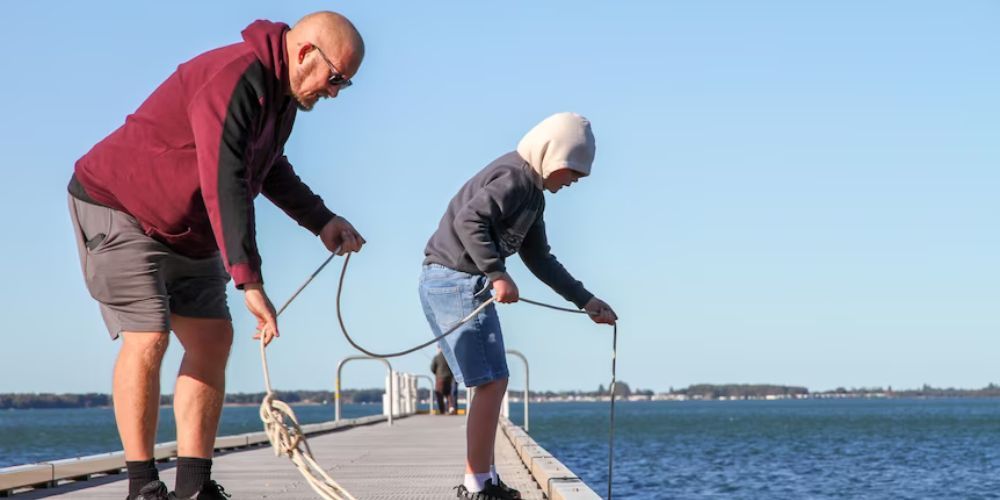
Ensuring Safety While Magnet Fishing
The thrill of magnet fishing comes with its share of risks, especially when you’re engaging with the ocean's unpredictable elements. It's essential to prioritize safety from the very start to ensure a rewarding experience.
So, first things first: you must be aware of legal permissions. Many regions require permits to magnet fish in public waterways. Always check local regulations and acquire the necessary permissions before you start; this not only avoids legal troubles but also promotes responsible fishing practices in your community.
Legal Permissions
Obtaining legal permission isn't just about following the law; it’s about showing respect for natural habitats and the regulations designed to protect them. Plus, don’t forget that some areas may have restrictions due to conservation efforts or local wildlife protection initiatives. An initial phone call or quick online search can save you time and potential fines later.
Once you've secured your permit, it’s crucial to consider your surroundings, especially concerning marine life.
Environmental Awareness
When magnet fishing, it’s important to tread lightly on our oceans. Marine life is delicate—coral reefs are particularly sensitive ecosystems that require careful navigation. Always avoid disrupting areas known for rich biodiversity.
When you encounter any hazardous finds such as sharp metal or illegal debris, report it immediately to the local authorities instead of attempting to remove it yourself. This aligns your hobby with good environmental stewardship, ensuring these habitats remain healthy for future generations.
Next on our list of safety measures is keeping an eye on what Mother Nature has planned for your day out.
Weather Conditions
A beautiful sunny day can quickly turn stormy; thus, checking weather forecasts is essential before heading out. Sudden rainfall or gusty winds can lead to unpredictable waves and strong currents that make magnet fishing extremely dangerous.
It's always smart to plan your outing for days when the forecast indicates favorable weather—calm seas will not only allow for a better retrieval experience but keep you safe while doing so.
Remember: Never hesitate to reschedule your plans if the weather seems unfriendly—the ocean will always be there tomorrow!
By adhering to these precautions, you enhance your chances for both safety and enjoyment as you uncover the hidden treasures waiting beneath the water's surface. As you gear up, considering where you'll cast your line can also make all the difference in maximizing your adventure.
Best Ocean Locations for Magnet Fishing
When it comes to magnet fishing, not all spots are equally fruitful; some locations are treasure troves waiting to be explored, while others may yield little more than disappointment. Embracing the adventure begins with choosing the right location. There’s a certain thrill in knowing that history lingers beneath the waves, and places with rich historical significance generally offer the most promising prospects.
Historical Harbors
Consider areas like Portsmouth in the UK or Boston Harbor in the United States—both steeped in maritime history. These locations attract tourists while also drawing eager magnet fishers. The narratives hidden in these waters span centuries, bringing with them significant finds like old tools, ship parts, and ancient coins. Each cast of the line might reveal an artifact that provides a glimpse into the past.
Imagine retrieving a coin from 200 years ago; it's tangible history surfacing right before your eyes.
The allure of these historical harbors makes them exciting hunting grounds, but there are also practical reasons for casting your magnets along well-traveled shipping routes.
Popular Shipping Routes
Shipping routes present an entirely different yet equally enticing opportunity for magnet fishing. These thoroughfares are often cluttered with lost cargo, tools forgotten by sailors, and remnants of shipwrecks which can easily end up settled on the ocean floor. Ships have been traversing these lanes for decades, if not centuries, creating a repository of objects discarded or dropped during their journeys. These sites could yield everything from valuable steel to vintage items that tell stories long lost to time.
Before heading out on your magnet fishing expedition, take time to research local regulations and unmarked wreck sites along these routes. Some areas may require permits or have restrictions regarding fishing near docks or industrial areas. Understanding the rules helps ensure that your treasure hunting remains within legal boundaries while avoiding potential hazards as well.
With ideal locations selected and regulations understood, let's explore how you can effectively harness your gear and techniques for a successful outing.
Effective Techniques for Success
Technique defines success in magnet fishing; proper methods maximize finds and minimize frustrations. One of the primary techniques that beginners should embrace is the Cast and Drag Method. This method is simple yet effective, allowing you to efficiently search large areas of underwater terrain without missing potential treasures. I remember my first outing where this technique transformed an uninspiring day into one full of discovery.
Cast and Drag Method
Step 1: Casting
Start by casting your magnet as far as you can. It's essential to ensure that your rope remains untangled during this process. A tangled rope can derail your entire attempt, so take extra time to unravel any knots before launching your cast. Think of it like a fisherman casting their line: the more accurately you throw, the better chance you have at catching something noteworthy below.
Step 2: Dragging
As you begin to drag the magnet back toward you, maintain a slow and steady pace. Engage your senses during this step, feeling for changes in resistance that may signal an object has snagged onto your magnet. Often, it's not just about brute force; sensitivity matters. The ocean can be unpredictable, so paying attention to subtle shifts while dragging is key to maximizing your efforts.
Step 3: Retrieving
When you detect resistance, don't rush—this moment is crucial. Gently pull in the rope while maintaining a consistent pace. If you jerk the rope too quickly, you risk losing your catch or damaging the items you've snagged. Think back to how fragile some detected items can be; patience often reveals hidden gems instead of leaving them drifting back into the abyss.
Mastering this technique isn’t just about acquiring more finds; it keeps you engaged and alert, ensuring you're constantly focused on what lies beneath the waves.
After you've mastered the Cast and Drag method, consider exploring additional techniques that may yield even greater rewards during your adventures in marine treasure hunting. There's much more to discover in terms of unique objects waiting just below the surface.
Interesting Finds and Treasures
Magnet fishing is more than just a unique hobby; it acts as a bridge between modern times and rich histories hidden beneath the waves. Each cast of the magnet in the water brings with it not just the possibility of retrieving metal objects but also the hope of uncovering remarkable relics from the past.
Imagine this: You're standing on a sun-drenched beach, line cast into the sea, unsure if your next pull will yield rusted nails or an artifact steeped in history. That moment of uncertainty adds to the allure.
Consider Sarah Lee's experience while magnet fishing in Florida; she stumbled upon a rusted box filled with old silver coins! Such finds aren't rare in the world of magnet fishing, where history often seems to resurface.
Noteworthy discoveries can vary widely but often include treasures like:
- Historical weapons: From swords to rifles, every find has a story to tell.
- Nautical equipment: Compasses and sextants evoke thoughts of voyages long forgotten.
- Everyday items turned relics: Pocket watches and jewelry shine with nostalgia, reminding us of lives once lived.
These captivating finds highlight why many are drawn to this activity—it's as much about uncovering lost artifacts as it is about enjoying nature and spending time outdoors. The excitement lies in never knowing what's hiding beneath the surface. Each trip transforms into a mini-adventure filled with curiosity and discovery.
Ultimately, magnet fishing offers not just treasure-hunting thrills but also a deeper connection with the past. For enthusiasts and newcomers alike, the ocean holds secrets waiting to be unearthed, igniting adventure with each new cast into its depths.
As you embark on your magnet fishing journey, consider exploring more about this thrilling pastime at Magnet Fishing Is Fun. Uncover
hidden treasures while embracing the joy of adventure!
Can you magnet fish in the ocean, and what should you consider?
Yes, you can magnet fish in the ocean, but there are specific considerations to keep in mind. The ocean’s saltwater can be more corrosive to your magnet, so investing in a high-quality, corrosion-resistant magnet is crucial. Additionally, the ocean’s vastness means that you might have to be more strategic about where you fish. Areas near piers, shipwrecks, and historical sites can be more fruitful, as these spots are more likely to have metal debris and artifacts. Always check local regulations, as some areas may have restrictions on magnet fishing to protect historical sites or marine life.
What type of magnet is best for ocean magnet fishing?
For ocean magnet fishing, a strong neodymium magnet with a pulling force of at least 500-1,200 lbs is recommended. This strength ensures that you can retrieve larger and heavier items, which are common in ocean waters. It’s also advisable to choose a magnet with a double-sided design, which increases your chances of latching onto objects. Since ocean environments are harsher, a magnet with a protective coating, such as epoxy or nickel, is essential to prevent corrosion and extend the magnet’s lifespan.
What gear do I need for magnet fishing in the ocean?
In addition to a high-quality neodymium magnet, you’ll need a sturdy rope, preferably made of nylon or polyester, with a breaking strength of at least 1,000 lbs. This ensures it can handle the weight of submerged objects. A pair of gloves is essential to protect your hands from sharp objects you might retrieve. Additionally, a grappling hook can be useful for pulling in larger or awkwardly shaped items. Lastly, bring a bucket or container to store your finds and any debris you want to dispose of properly.
Are there specific locations along the coast that are more suitable for magnet fishing?
Yes, specific locations along the coast that are more suitable for magnet fishing include harbors, piers, and areas with known shipwrecks, as these sites tend to accumulate lost metal items due to frequent maritime activity. Statistically, about 30% of successful finds occur in these high-traffic zones, as they offer access to a variety of submerged objects from fishing gear to historical artifacts. Always ensure you have the necessary permissions and respect local regulations while magnet fishing.
What safety precautions should be taken while magnet fishing in the ocean?
When magnet fishing in the ocean, always wear a life jacket to ensure your safety, especially if you're near deep water. Be mindful of tide changes and stay aware of your surroundings; drowning incidents can occur unexpectedly, with statistics showing that about 4000 drownings happen in the U.S. each year. Additionally, use gloves to protect your hands from sharp or hazardous materials and check for local regulations to avoid legal issues while ensuring respect for marine life and habitats.
Can I find anything valuable when magnet fishing in saltwater compared to freshwater?
Yes, you can find valuable items when magnet fishing in saltwater, but there are important differences compared to freshwater. Saltwater environments often yield interesting maritime artifacts, such as coins, jewelry, and even shipwreck remnants. Statistically, a survey of magnet fishers revealed that those who magnet fish in coastal areas report finding 30% more coins than those in freshwater locations due to the historical presence of trade routes and shipping activities. However, be prepared for higher corrosion on metal objects due to saltwater exposure.
Author: Will Flaiz


